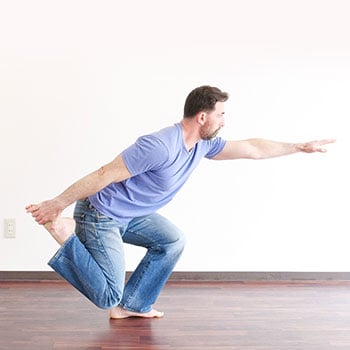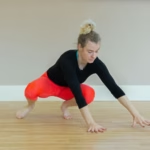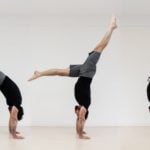You’re putting in the work, so why does it feel like you’re getting nowhere?
Bodyweight training can be frustrating sometimes.
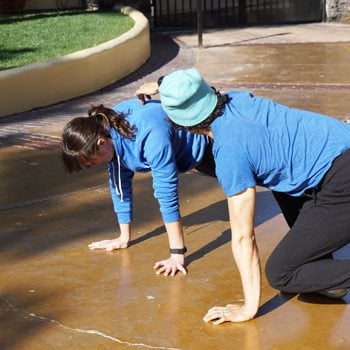 When you lift weights, progress is obvious—you add more weight to the bar. But with bodyweight movements, it’s easy to feel like you’re just repeating the same exercises over and over without knowing if you’re actually improving.
When you lift weights, progress is obvious—you add more weight to the bar. But with bodyweight movements, it’s easy to feel like you’re just repeating the same exercises over and over without knowing if you’re actually improving.
The good news? You are making progress—you just need better ways to track it.
Instead of obsessing over reps or trying to jump into advanced moves before you’re ready, here’s how to measure real progress in a way that actually translates to strength, control, and confidence in how you move.
3 Ways to Measure Bodyweight Training Progress
There is only one guarantee when it comes to training, and that is:
You WILL improve with consistent effort over time.
That equation never fails, but the key is to ensure your consistent effort is directed toward a particular goal, and your improvement is able to be measured over time.
Improvement doesn’t always have to be measured by increased repetitions or weight load.
When it comes to bodyweight training, after a certain point those metrics aren’t going to apply as well. So, rather than giving up on tracking your bodyweight training progress, you’ll need to look at different measures to evaluate your improvement and make sure you are still on the right track.
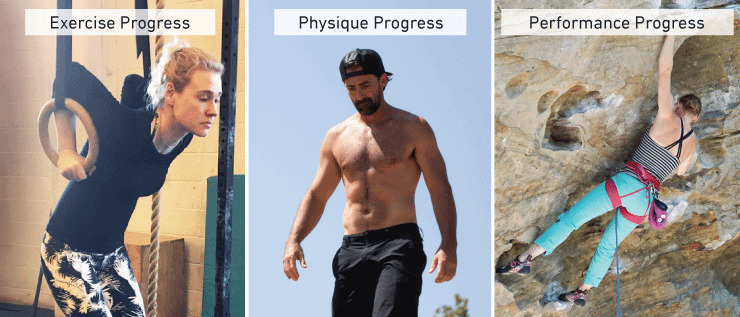
There are three main areas of progress you might measure, depending on your goals:
- Exercise progress
- Physique progress
- Performance progress
Again, the most important thing before you can even begin talking about tracking progress is that you are fully aware of what you are working toward at any particular time.
Remember the GMB Cycle Method and choose a measure of progress below accordingly.
1. Measuring Exercise Progress
There are several ways to measure exercise progress, and you can use any one, or a combination of a couple, to test out your success on a particular program or with a particular movement.
Total Training Volume
This refers to how many repetitions (or how much time) you’ve performed in total for the training session.
It can be difficult to add repetitions within each set, though.
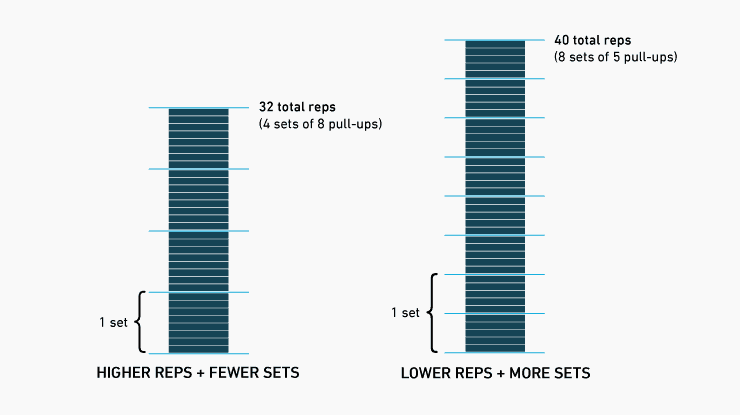
For example, you’ve been stuck at a set of 12 max pull-ups and the 13th repetition seems impossible to achieve. A great way to break out of that plateau is to increase the number of sets of pull-ups in order to achieve more total repetitions. Say you’ve been doing 4 sets of 8 pullups, for a total of 32 repetitions. If you change your workout to 8 sets of 5, now you are at 40 repetitions total.
That’s an improved workload, and when performed using an intelligent progression – don’t double your volume every week! – you’ll definitely notice an improved physical work capacity. You will have conditioned yourself to do more with your body with less effort, and that’s always a good thing.
Same Volume in Less Time
This type of measurement of the “density” of your workout has been around for a long time. From bodybuilders to endurance athletes, this type of progression shows you have improved intra-workout recovery capacity.
Simply put, you can do the same amount of work in less time.
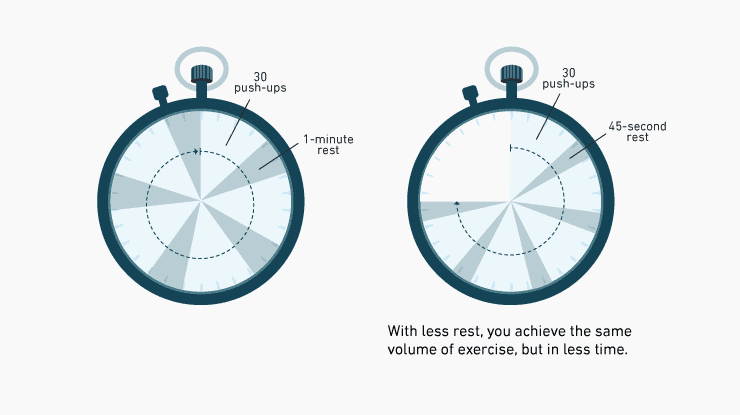
Rather than adding repetitions or sets, progressively work to less overall rest periods. If you normally do 5 sets of 30 pushups with a minute of rest in between sets, you’ve improved if you can do those same 5 sets of 30 with 45 seconds of rest.
Alternatively, you can perform the workout by grouping exercises together, rather than doing all your sets of one exercise then moving on to the next one.
For example, instead of doing 5 sets of pull-ups with a minute of rest in between, then going on to 5 sets of dips with a minute of rest in between, you would do a set of pull-ups, rest 30 seconds, then do a set of dips, rest 30 seconds, then pull-ups and so on, until you’ve completed 5 sets of both.
Again, be sure to reduce your rest periods slowly, as this type of progression can be surprisingly stressful.
Don’t feel the need to keep the resting time uniform either, you may start at 30 seconds rest and then rest longer later in the workout if the fatigue is deteriorating your form.
Quality of Movement
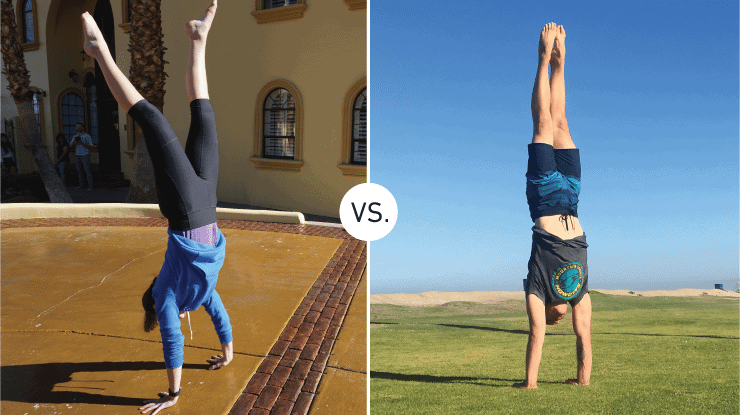 This is my favorite way of evaluating exercise progress, especially when we are working on skill development and body control.
This is my favorite way of evaluating exercise progress, especially when we are working on skill development and body control.
You can still track repetitions and resistance (or a leverage progression in a bodyweight skill) but you should place more value on how well you move during those repetitions.
- How is your form and technique?
- How much effort does it take you to do those repetitions of the movement?
- How slowly can you do the movement? (Slowing movements down can often expose weaknesses in form)
Improved form with less effort in the same amount of repetitions is a definite improvement! In fact, it’s arguably the best type of improvement!
“Make it pretty!” as our fearless leader Ryan likes to say. Graceful and controlled movement wins over a just-barely-made-it repetition every time.
2. Measuring Progress in Your Body
 GMB training isn’t about chasing an ideal physique.
GMB training isn’t about chasing an ideal physique.
Our focus is on helping you move better, feel better, and live with more freedom in your body.
That said, as you train, you’re going to notice changes—not just in how you look, but in how your body functions and feels every day.
Here are some key signs that your training is making an impact:
1. Your Posture Feels More Natural
Without even thinking about it, you’re standing taller, your shoulders feel more open, and you don’t catch yourself slouching as much at your desk. These are signs that your body awareness, mobility, and strength are improving.
2. You Move with Less Stiffness (or Pain!)
If you used to wake up with a stiff back, tight shoulders, or cranky knees—and now those things are happening less often—you’re making serious progress. Even small reductions in discomfort mean your body is adapting and functioning better.
3. Your Physique Reflects Your Training
We don’t train for looks, but if you’re moving better, you’ll likely look stronger and more athletic. If you want to track these changes:
- Waist measurements are more reliable than a scale. If your weight stays the same but you’ve lost an inch off your waist, you’ve likely gained muscle and lost fat.
- Progress photos can help, but keep the conditions consistent—same lighting, location, time of day, and posture—to get a clear comparison.
Maybe your pants are looser at the waist, or your shirts fit better across your shoulders. Even without a change in weight, shifts in muscle and fat distribution mean your body is reshaping itself based on how you’re training.
3. Measuring Performance Progress
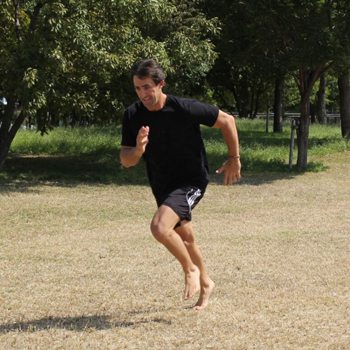 Performance progress isn’t just about what happens during a workout—it’s about how much easier movement feels in everyday life.
Performance progress isn’t just about what happens during a workout—it’s about how much easier movement feels in everyday life.
You’re not just building strength, flexibility, and control; you’re making it easier to do the things you care about.
You Move with More Ease and Control
The biggest sign of progress is simple: things feel easier.
You stand up from the floor without thinking about it. You reach for something on a high shelf without that awkward stiff feeling. You can change directions quickly without feeling clunky.
Your body just works better for the things you do every day, whether that’s hiking, playing with your kids, or just getting through a long day without aches and stiffness slowing you down.
You’re Less Worn Out by Physical Effort
When you first start training, certain movements might leave you feeling wiped out.
But over time, you recover faster and feel ready for more.
Stairs don’t leave you winded. Carrying groceries doesn’t make you pause halfway to the car. Even after long workdays, you’re still moving well instead of feeling stiff and sluggish.
That’s a clear sign your endurance and work capacity are improving, even if you’re not tracking every little metric.
You Keep Surprising Yourself with Small Wins
GMB training isn’t about grinding through workouts—it’s about building real skills over time.
That means you’ll constantly notice little breakthroughs: a movement that used to feel shaky is now solid, a stretch that once felt impossible now feels natural, and a skill you never thought you’d be able to do is suddenly within reach. Even when progress isn’t obvious, these small moments of effortless control are proof that your body is adapting and getting better all the time.
Real progress isn’t measured by a number—it’s measured by how capable, confident, and free you feel in your own body.
And if you’re training with intention, that progress never stops.
Sometimes All You Need is a Change in Perspective
We all train because we want to improve—whether that means getting stronger, moving better, playing harder, or just feeling good in our own bodies. At first, progress is obvious. But once the quick wins slow down, it’s easy to feel like you’re stuck.
That’s when a shift in perspective can make all the difference.
Instead of chasing bigger numbers or waiting for some dramatic breakthrough, look at the real changes happening in your body and daily life. Maybe your movements feel smoother, your posture is better, or you recover faster after tough sessions.
That’s progress, even if it’s not measured in reps or PRs.
The key is staying consistent, knowing why you’re training, and recognizing the improvements that actually matter. Keep your focus on what you want to achieve, track your progress in ways that keep you motivated, and your success is inevitable.
Build Strength That Translates to Real Life
It’s not just about getting stronger, but about making that strength work for you in any situation.

